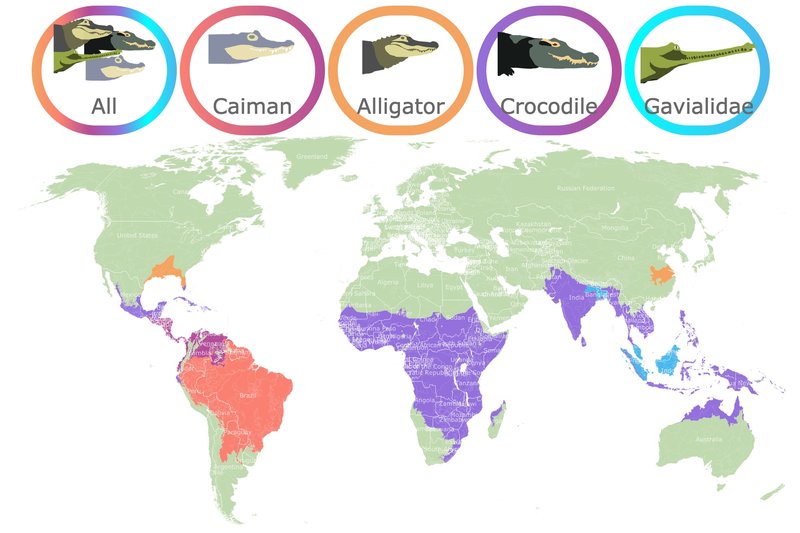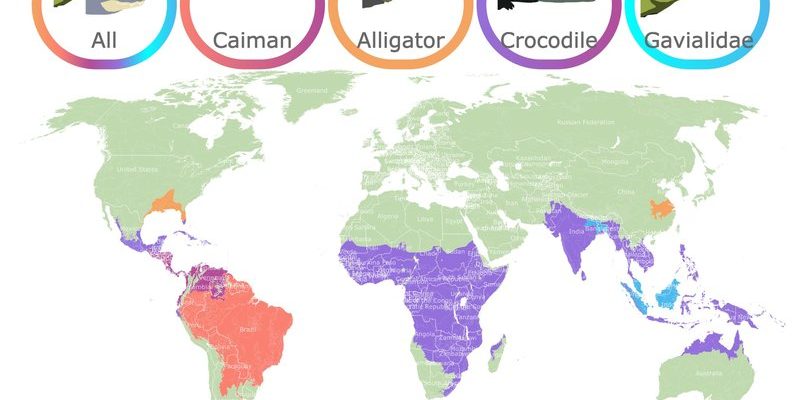
Let’s dive into the world of crocodiles and explore their habitats. You may be surprised to learn that they inhabit a range of environments, from freshwater to saltwater, across different continents. Just like humans find neighborhoods that suit their lifestyles, crocodiles have their preferred habitats, each with unique features that meet their needs for food, safety, and reproduction.
Understanding Crocodile Habitats
Crocodiles are highly adaptable reptiles. They can thrive in various environments, which is one reason they’ve lasted through the ages. Their main habitats typically include:
- Freshwater habitats: These are lakes, rivers, wetlands, and swamps where crocodiles find plenty of food and places to hide.
- Saltwater habitats: Some species, like the saltwater crocodile, can live in coastal waters, estuaries, and even open seas. They are known for their ability to travel long distances in the ocean.
While they might seem restricted to these areas, crocodiles can be quite versatile. For example, their ability to adapt to both freshwater and saltwater makes them different from many other reptiles.
Geographic Distribution of Crocodiles
Crocodiles are found in various regions worldwide, primarily in tropical and subtropical areas. Here’s a closer look at where you’ll find these fascinating creatures:
- Africa: The Nile crocodile is perhaps the most famous species here, living in rivers, lakes, and wetlands throughout sub-Saharan Africa.
- Australia: Home to the saltwater crocodile and the freshwater crocodile, Australia has vast wetlands and coastlines providing perfect habitats.
- Asia: Species like the mugger crocodile thrive in countries like India and Pakistan, often found in rivers and lakes.
- Americas: The American crocodile can be found in coastal areas of the southern United States, Central America, and parts of South America.
The diversity in their geographic distribution is a testament to their adaptability and resilience as a species.
Crocodiles in Freshwater Environments
Freshwater habitats are crucial for many crocodile species. These areas provide abundant food sources and suitable breeding grounds. Here are some important aspects of their presence in freshwater:
Crocodiles are primarily ambush predators, which means they rely on stealth to hunt. In freshwater environments, they often wait near the water’s edge, camouflaging themselves among the reeds and vegetation. When unsuspecting prey comes close, they strike with incredible speed.
Also, freshwater habitats allow young crocodiles to grow safely. They can find plenty of small fish, insects, and crustaceans to eat before moving on to larger prey. Wetlands, swamps, and lakes are especially important for breeding, as these are where they build nests and raise their young.
Crocodiles in Saltwater Environments
While many people associate crocodiles with freshwater, certain species, like the saltwater crocodile, are perfectly at home in saltwater habitats. Here’s why:
Saltwater crocodiles are known for their incredible size and strength, being the largest living reptiles on Earth. They often inhabit estuaries and can even swim out in the ocean for long distances. This adaptability to salinity allows them access to a broader range of food sources, including marine animals.
These crocodiles also play a vital role in their ecosystems, keeping populations of fish and other marine creatures in check. Their presence in coastal regions indicates a healthy environment, influencing the entire food chain.
Factors Affecting Crocodile Habitats
Several factors can impact where crocodiles choose to live. Here are some crucial elements that affect their habitats:
- Climate: Crocodiles prefer warmer climates, so their distribution is largely determined by temperature. They thrive in tropical and subtropical regions.
- Water Availability: Access to clean water is crucial. Pollution, drought, and habitat destruction can severely threaten their living conditions.
- Human Activity: Urban development and agriculture can encroach on their natural habitats, forcing crocodiles to adapt or relocate.
Understanding these factors is essential, as protecting crocodile habitats is crucial for their survival.
The Importance of Conservation
With all the threats facing crocodiles today, conservation efforts are more important than ever. Crocodiles are not just fearsome predators; they also play a vital role in maintaining the health of ecosystems. Here’s why we should care:
Crocodiles control the population of prey species, helping to maintain the balance in their habitats. When crocodile numbers decline, it can lead to overpopulation of some species, which then disrupts the ecosystem further.
Conservation efforts help protect not only crocodiles but also the habitats they depend on, benefiting countless other plant and animal species. By ensuring their survival, we also safeguard these environments for future generations.
Crocodiles are truly remarkable animals, thriving in a variety of habitats around the world. From freshwater wetlands to saltwater rivers, their adaptability is nothing short of amazing. Understanding where crocodiles live helps us appreciate their role in the ecosystem and the importance of conservation.
As we continue to encroach on their habitats, it’s crucial to recognize the need for balance. By protecting crocodile populations and their environments, we contribute to a healthier planet. So, next time you hear about these fascinating reptiles, remember just how important they are to our world.

